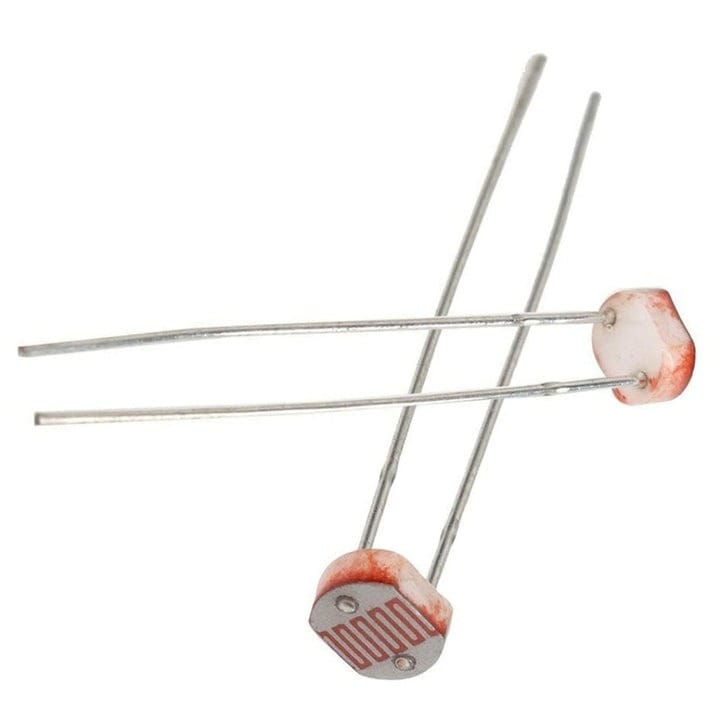Your cart is currently empty!
5MM Photosensitive Resistance Photoelectric Detection Switch Sensor
Get Extra 5% off (up to ₹100) with UPI/Debit Card! The discounted price is: ₹6.65 (Original price: ₹7.00)
Available Offers
+1x5MM Photosensitive Resistance Photoelectric Detection Switch Sensor
Description
A Light-Dependent Resistor (LDR), also known as a photoresistor, is a passive electronic component whose resistance changes in response to the intensity of incident light. The fundamental working principle of an LDR is based on its semiconductor material’s ability to conduct electricity more or less depending on the amount of light striking its surface.
It seems like you’re referring to a selection of 5mm photosensitive resistors or photoresistors with different model numbers:
5506 5516 5528 5537 5549 Each of these photoresistors may have slightly different specifications, including their resistance range, response time, spectral sensitivity, and other characteristics.
Working principle of an LDR:
Semiconductor Material: LDRs are typically made of semiconductor materials, such as cadmium sulfide (CdS) or cadmium selenide (CdSe). These materials exhibit a property called photoconductivity, which means their electrical conductivity changes when exposed to light.
Resistance Variation: When there is little to no light shining on the LDR, its resistance is high. In other words, it does not conduct much current. This state is often referred to as the “dark resistance” or “high-resistance state.”
Light Exposure: When light falls on the surface of the LDR, photons from the light excite electrons within the semiconductor material. This extra energy allows more electrons to move freely, reducing the resistance of the LDR. Consequently, it becomes more conductive and allows more current to flow.
Inverse Relationship: The relationship between the resistance of an LDR and the intensity of light is typically inverse. That is, as the light intensity increases, the resistance decreases, and vice versa. This property allows LDRs to be used as light sensors.
Features
- Can be used to sense Light
- Easy to use on Breadboard or Perf Board
- Easy to use with Microcontrollers or even with normal Digital/Analog IC
- Small, cheap, and easily available
- Fast response speed and high safety performance
- Green and environmentally friendly
- Good reliability
Applications
- Automatic Street Light
- Detect Day or Night
- Automatic Head Light Dimmer
- Position sensor
- Used along with LED as an obstacle detector
- Automatic Bedroom Lights
- Automatic Rear-view mirror
Package Includes
- 1 x 5MM Photosensitive Resistance Photoelectric Detection Switch Sensor
Reviews
You must be logged in to post a review.
Recently Viewed

5MM Photosensitive Resistance Photoelectric Detection Switch Sensor

ATM Machine Gate Security System
![Self Watering Plant Pot [Pack of 3]](https://iyzer.in/wp-content/uploads/2024/06/Iyzer-62-100x100.jpg)

















Ms. Vihaan Kapoor (verified owner) –
Bahut badhiya product! Exactly as shown in pictures. Wah!
Er. Prisha Agrawal (verified owner) –
बिना किसी समस्या के काम करता है। कई उपयोगों के बाद भी कोई समस्या नहीं। सर्वोत्तम!
Shri Atharv Sharma (verified owner) –
पैसे का सही मूल्य। मैं अपनी खरीदारी से बहुत संतुष्ट हूं। जबरदस्त!
Navya Patel (verified owner) –
Exactly as shown in pictures. Happy with the quality. Love it!
Mrs. Aaradhya Saxena (verified owner) –
तस्वीरों में दिखाए अनुसार बिल्कुल सही। गुणवत्ता से खुश। सर्वोत्तम!
Smt. Aadi Goel (verified owner) –
बिना किसी समस्या के काम करता है। कई उपयोगों के बाद भी कोई समस्या नहीं। फिर से खरीदूंगा!
Mrs. Atharv Nair (verified owner) –
Product arrived on time and in good condition. Works well. Will buy again!
Prof. Yuvaan Agrawal (verified owner) –
Ekdam perfect for my needs. Very happy with purchase. Best hai!
Ms. Advait Joshi (verified owner) –
Delivery fast thi aur packaging bhi acchi thi. Phir se lunga!
Dr. Riya Khanna (verified owner) –
Delivery fast thi aur packaging bhi acchi thi. Superr!
Reyansh Banerjee (verified owner) –
Product accha hai, but delivery thoda late hui. Wah!
Er. Tara Sen (verified owner) –
Works flawlessly. No issues after several uses. Will buy again!